by Wallace Wyss –
The trouble with the 289 Cobra was that it was competitive for one brief moment in time. And Ford, which had been happy to promote the Cobra in ‘63 saw it as a waste of time once they had the 200-mph GT40 under development.
Carroll Shelby thought, why not stuff one of those NASCAR side oiler 427s in a Cobra? But there wasn’t much budget to do an all new chassis so he just took a 289 roadster and stuffed a big block in. Gave it to Ken Miles to try out a Nassau.
Even though General Motors was officially not in racing they had OK’d the production of a big block Corvette with a 396 cubic inch soon to go to 427 cubic inches. And they built three racing versions called Grand Sport.
Of course, Ford already had several big block engines, some of them powering NASCAR racers. Shelby knew that a new version would need a bigger frame, or at least a bigger diameter tubing and a new suspension–after all the 289 Cobra had a leaf spring suspension dating to the 1953 Ace.
But while Ford was working on a new frame for the big block Shelby tried to shape up a small block Cobra to see if it could run with a big block engine.
Ken Sutton was hired to strip down CSX2196 and he strengthened the chassis, but also did numerous changes to squeeze in the big block, including moving the bell housing back, and relocated the foot boxes for more exhaust clearance and better brakes and added a larger fuel tank, Koni shock absorbers, an oil cooler and racing windshield. The first body was a 289 Cobra body with three holes added for air intake above the grille. Was Miles poking fun at the Ferrari 250GTO or are we supposed to think it’s just coincidence?
Usually a new race car has months of development prior to a race but Ford was getting the GT40 ready and the Cobra couldn’t afford a separate testing program. So Shelby decided to test it in combat, no matter what embarrassments they might suffer if it broke. So they entered it at Sebring–only one driver was scheduled to drive it, Ken Miles who knew how to nurse an ailing car to the finish line but that wasn’t the goal here–it was to push it hard and see what broke. Everything broke–a leaking brake line, a blocked fuel line and heavy vibration were dealt with.
And Miles smashed it into a tree. What was a tree doing in a racetrack? Hard to explain. There was only one tree and Miles found it. He hurt three ribs but insisted on staying up all night to pound out the dents. But then he was too tired to finish so a young driver, John Morton, took his place but he didn’t run very far before the car broke and was withdrawn after a complete engine failure.
The car was not retired yet. There was still the Nassau races. This time it got a nose redesign– a flip forward nose like an E-type Jag. The chassis was clothed in a new thin-gauge aluminum body and even the rear was a rear-hinged section including the fenders.
Also fitted was an experimental aluminum block NASCAR 390 engine. With all these weight saving measures, the car weighed 1600 lbs, some 500 less than a standard 289 Cobra. In this configuration, Dave Friedman said the car was referenced as ‘The Turd’ for its ugly shape by the mechanics but was called by Shelby the ‘Flip-Top’.
The next trial by combat was Nassau. Trouble was, Nassau was where Chevy’ master plotter, Zora Arkus-Duntov, got a respite from GM’s anti-racing rules–enough to enter three lightweight 427 Corvette Grad Sports. The 390 Cobra did show them a clean pair of heels until an oil line broke.
Ford had a guy doing a tubular frame design for the big block cobra back in Detroit that was using bigger tubes set wider apart and has coil springs, not old fashioned leafs. The engine lid was still like the street Cobra though, not flip top.
The 427 Cobra was green lighted for production. As has been chronicled many times, the 427 Cobra was refused homologation as a production sports car when the FIA inspector counted just over 50 cars at the factory instead of the required 100, which meant as a race car it had to run against lighter faster prototypes. Ford didn’t care, by then they were totally focused on getting the damn GT40 reliable—this time with a big block.
The Flip-Top CSX-2196 was retired as an active racer, instead used as a development vehicle. The Flip-top went out to pasture so to speak. It passed through the hands of several collectors, including one of the most far-sighted, Bob Lee. In 2007, the Flip-Top 427 Cobra reminded Brits of where the Big Block had begun by running the Goodwood Festival of Speed. It has had a few engine changes in its long creer, including a Rex Hutchison alloy 427 Ford rated at 623 (dyno) horsepower at 6,300 rpm with 611 pound-feet of torque at 4,200 rpm. In 2012 it was a star of the Cobra ‘Featured Marque’ celebration at the Monterey Historics at Laguna Seca in Monterey County, CA.
Around 2013 it was owned by Isabel & Chuck Ungurean, who specialize in high-performance cars, and you can’t get much more rare in Cobras than the Flip-top–the missing link between the small block and the big block Cobras.
Let us know what you think in the Comments.
THE AUTHOR/ARTIST Wallace Wyss did this portrait below in oil of the Flip-Top. It’s part of a two painting set, including the rear 3/4 view. For availability write malibucarart@gmail.com
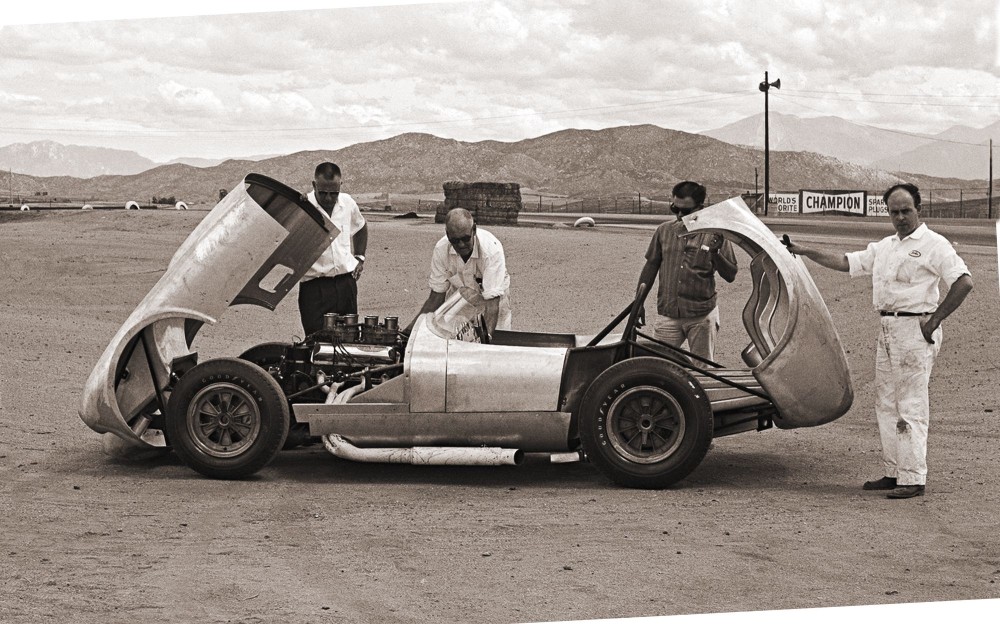
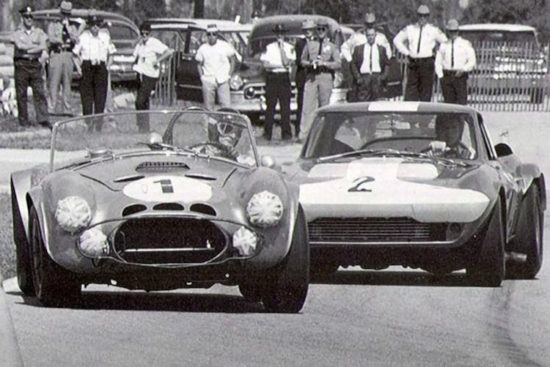
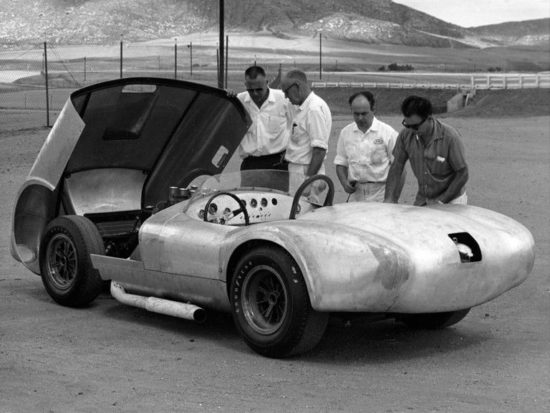
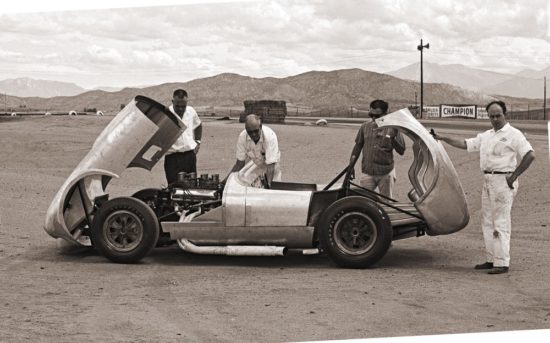
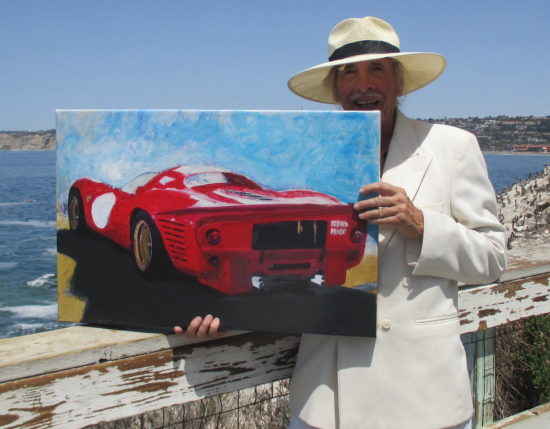
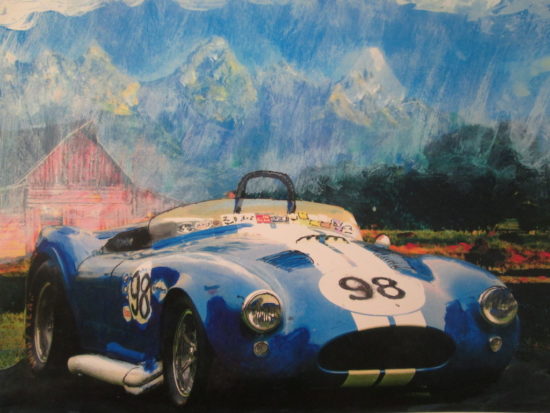
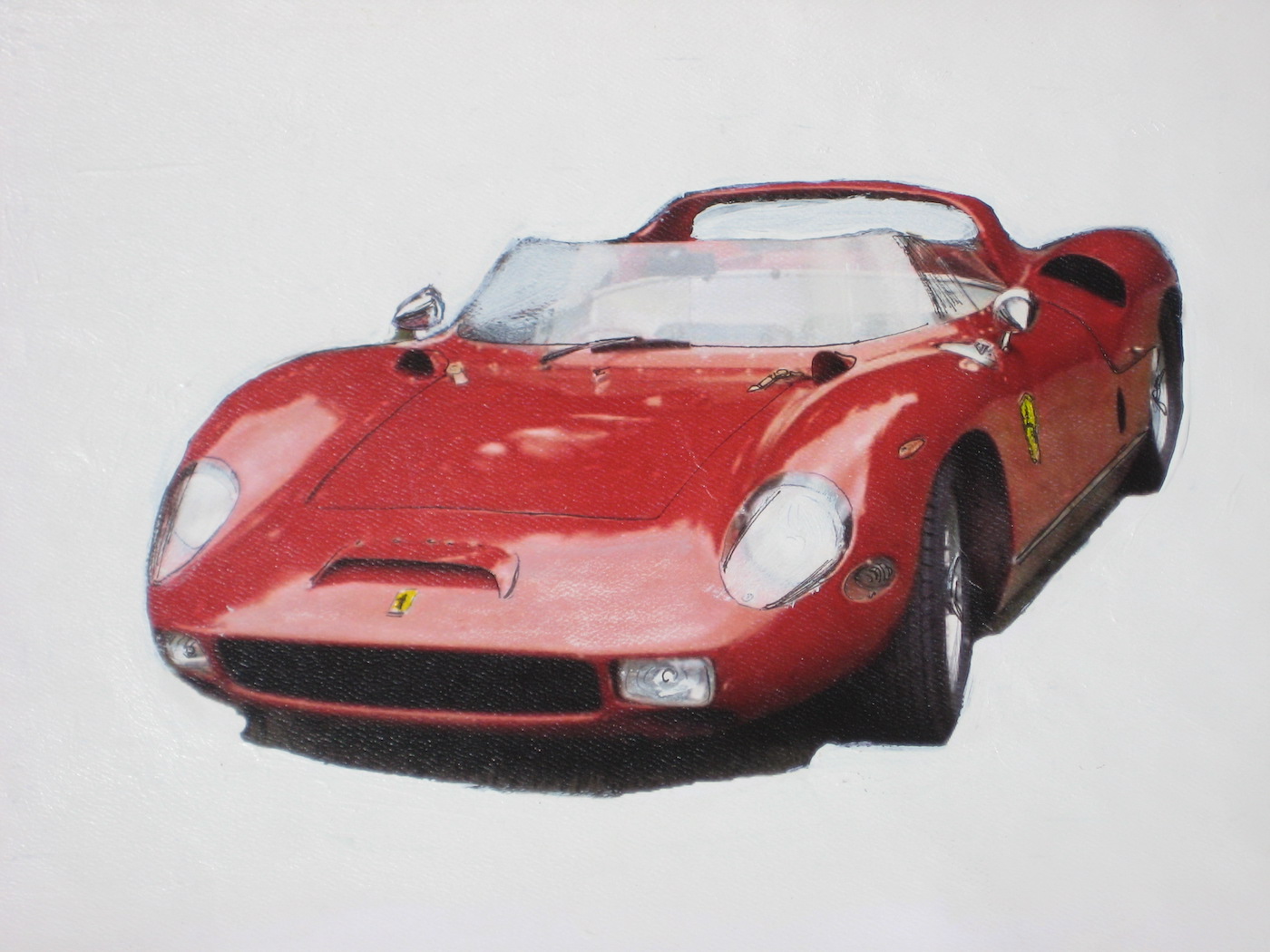

I’ve never seen this information before, and this article is what I’d call a ‘keeper.’
I have never heard Ford’s reaction to the car; but you have to remember that Ford had already
tired of the Cobra when they found out it would only go about 165 mph, and they knew they had to have a car that would top 200-mph to win LeMans. So they wanted Shelby to refine the GT40 that had flubbed so badly in ’64 when John Wyer ran the GT40 racing effort. They didn’t want to hear about the 427 Cobra.To them it was like some airplane maker proposing a new prop fighter plane in ’46 when we American airplane manufacturers were already working on the jet fighter.
Please adjust your upload attachment requirements ! I have tried to post photos but get rejected. I have no such issues on other sites. I was in attendance when Ken tried his had at tree trimming in Florida. That job was almost finished prior to him showing up unexpectedly. Big departure from him piloting the Sunbeam Alpines in 62. Would love to share the evidence with your viewers.
John,
Send me your photos by email and I will see if I can figure out what is wrong with them.
michael.gulett@gmail.com
Klaus Arning was the engineer responsible for the 427 big tube chassis- hung out with his son on Woodward Ave.